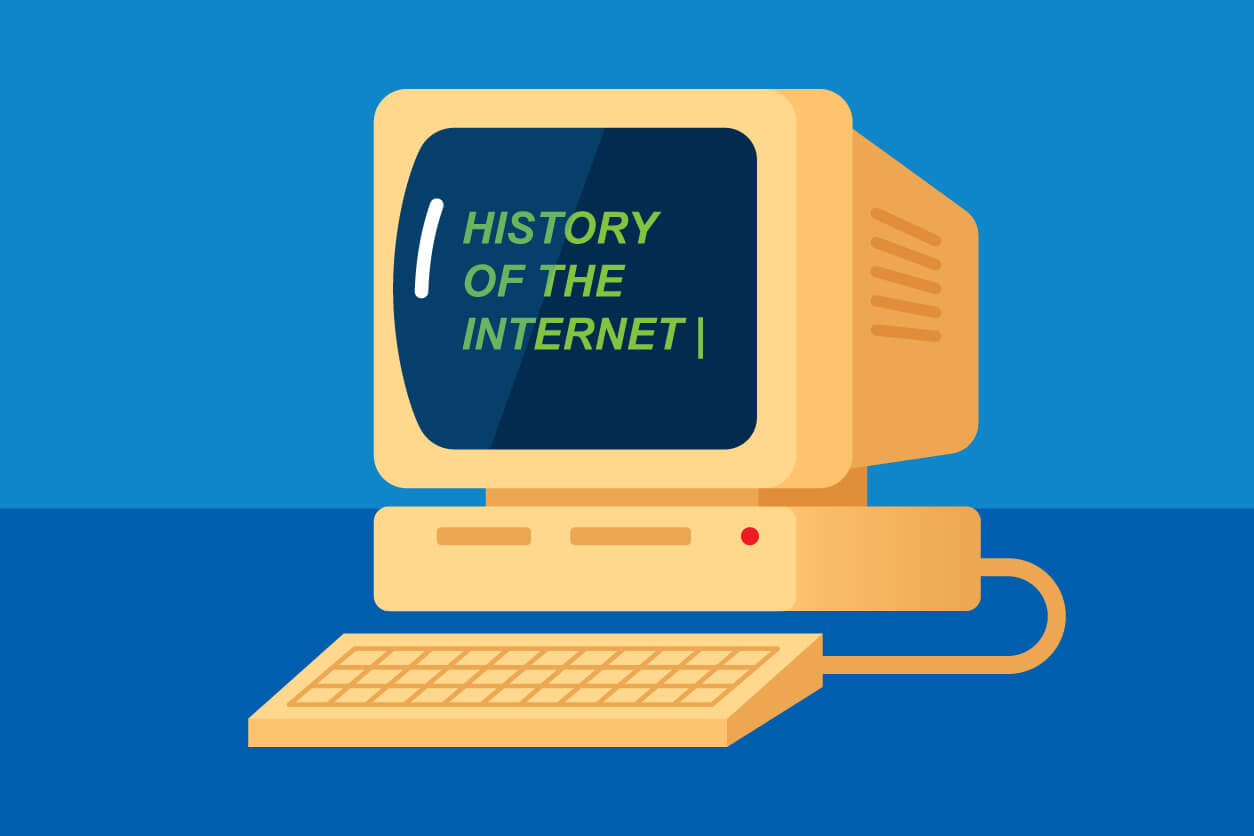History of the Internet
Thanks to the Internet, billions of information can be transferred back and forth in a split second and before you know it, you are able to reach out to people halfway across the world in real-time! You can shop, socialize, learn, stream, and innovate online. What is even more astonishing is all this took less than a hundred years to develop! But how did it all begin? Let’s take a quick look at the history of the internet and how it has evolved throughout the years.
The two letters that started the internet
In 1969, packet switching was put to the test by setting up two computers far apart from each other. One computer was set up to send “LOGIN”, but the computers crashed before being able to send the whole word, thus only being able to send only two letters, “LO”. This was the earliest prototype of the internet.
In the late 1970s, Vinton Cerf invented Transmission Control Protocol (TCP), which allows computers on the various mini-networks to communicate with each other. This turned the internet into a global network.
World Wide Web History
In 1991, Swiss programmer Tim Berners-Lee invented the World Wide Web. From something that people could only use to send files, the internet became something that anyone can access. Before his invention, sharing information was difficult. People had to log into different computers anytime they wanted to share information with each other.
- In 1992, the first commercial use of the internet began.
- In 1994, online websites were starting to surface and make recognition. At this point, there were 623 websites online.
- In 1995, 16 million people were online, and most were communicating through emails.
PKI Security
In the early 1970s, the invention of Public Key Infrastructure (PKI) at the British intelligence agency GCHQ was first developed. It played a big role in the growth of security software and platforms we currently use.
In the mid-1990s, these PKI discoveries were made public. It initially stayed private due to the highly classified information in the GCHQ.
Since digital electronic communications and their developments were quickly progressing, one necessity surfaced: an essential need for a secure way to communicate with each other. The need for authentication and secure communication became much more evident when the World Wide Web was invented and rapidly expanded.
Website Security
Businesses, most especially those in the e-commerce and online access to web browser private databases, needed a tool to protect their websites.
When did SSL Certificates Start
In 1994, Taher Elgamal and Netscape developed the Secure Sockets Layer/Transport Layer Security (SSL/TLS) or more recognized as the HTTPS in URLs. It featured the much-needed encryption and server communication for web browsers.
In 1995, SSL Version 2.0 was released. This was the solution to the growing security needs of web browsers and various TCP protocols. The SSL served as its transport security. As the SSL/TLS evolved, the succeeding SSL/TLS versions were made to be more secure and provided a solution to fix the deficiencies of the first version used by web browsers. This includes better authentication, protection, integrity, and encryption. Now, the latest version of SSL is changed to Transport Later Security (TLS), which is the most secure version of SSL to date.
In 1996, as the World Wide Web was booming and the internet continued to develop, GlobalSign was founded in Belgium. It was one of the pioneers in the PKI industry and is a well-established Certificate Authority (CA), PKI, and SSL/TLS provider.
In 2015, it was acquired by GMO Group in Japan. GlobalSign certificates are globally recognized among the top web browsers, web servers, email clients, mobile devices, and internet applications and platforms.
To this day, GlobalSign is distinguished as a leader in the public trust services, catering to IoT innovators, enterprises, companies, agencies, and institutions worldwide. GlobalSign has greatly contributed to ensuring that users can safely access the internet and communicate with each other. While the internet’s future is rapidly evolving, we know that GlobalSign will continue to be at the forefront of online security, identity, and innovation to cater to you—today and for many years to come.







